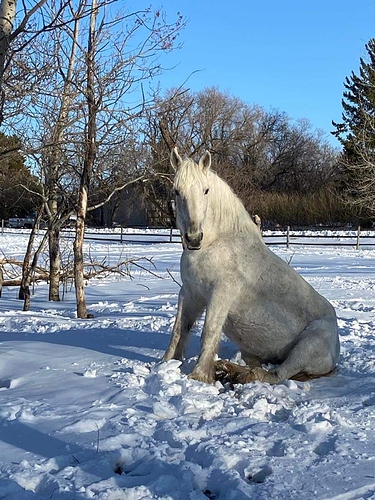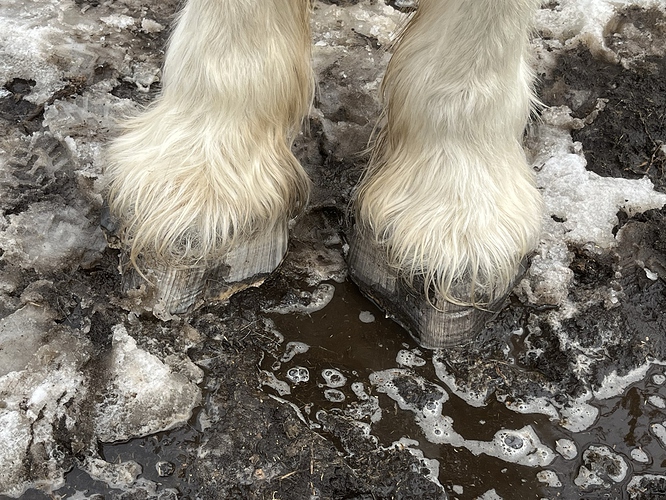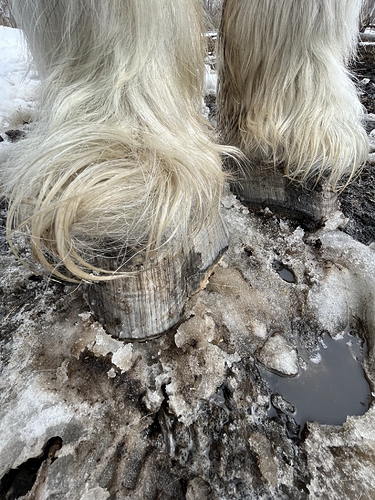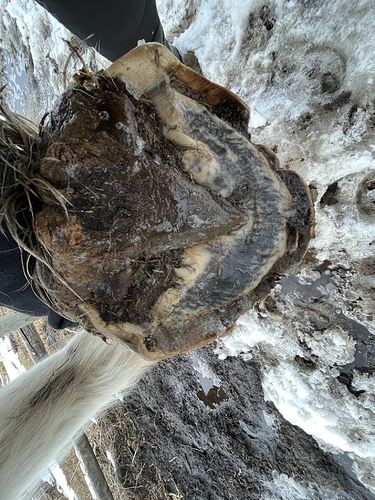I know the shape is strange, but the sole shape doesn’t look strange except for the very pointed toe, which is probably due to a ridge of excess sole and the long wall at the very tip. If you trimmed the sole (only at the very tip) to find the white line, I think the shape would be quite a bit more rounded.
The rest of the strangeness seems to be extreme flaring from the crack that you can see on the RF all the way back, on both sides and on both feet. Basically the feet look like they have flared badly everywhere except the front third of the hoof, which has maintained a decent white line connection. The hoof has ended up with a kind of 3 leafed clover shape. If you look at the sole pic you can see just how badly the walls are flaring outwards, and again a lot of that hoof shape would be improved just by removing the excess wall and addressing the.flaring. It would probably take a few trims because the flaring is pretty bad.
If those feet were trimmed 3 weeks ago, I have no idea what the farrier thought he had achieved, but I do agree that the hoof is probably naturally a bit more of a pointed shape than most.
The sole shape is what’s telling the truth, because the walls have flared and distorted the hoof shape. I think once it was cleaned up, the sole shape would be like this one (scroll down to pic of grey Percheron). The hoof shape would mirror the sole shape if there was no flaring and the walls were trimmed to a consistent length.
https://www.hoofrehab.com/Draft.htm
edited to add - I should have started out by saying that she’s beautiful and looks so sweet. I hope the owner can get her back on track.





 Any chance you can get some cleaner shots of the sole? When was this horse last trimmed? Has canker been ruled out?
Any chance you can get some cleaner shots of the sole? When was this horse last trimmed? Has canker been ruled out?
